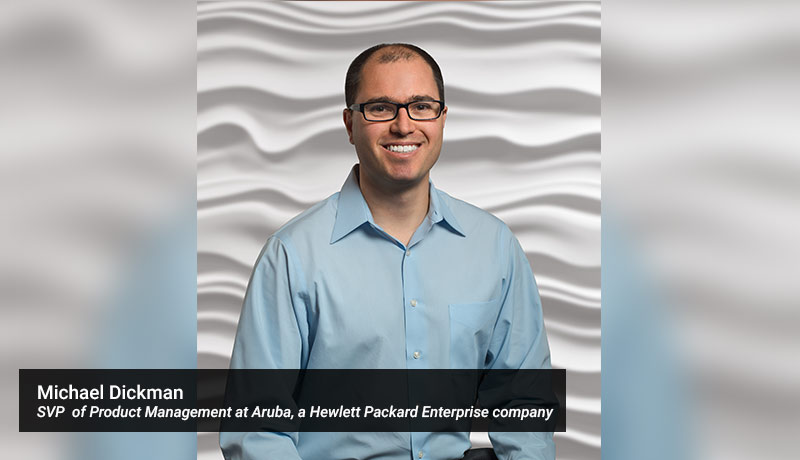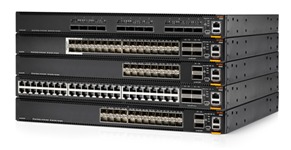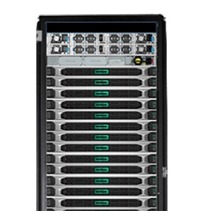
By Michael Dickman, Senior Vice President of Product Management at Aruba, a Hewlett Packard Enterprise company
According to Gartner, “By 2025, 85% of infrastructure strategies will integrate on-premises, colocation, cloud, and edge delivery options, compared with 20% in 2020. This is a significant architectural shift that will require workloads to be processed closer to where data is being created, across many edge locations.
But as enterprise IT organizations make this shift, most are unprepared. Edges of siloed compute and storage are connected via disjointed network architectures, with operating models that hinder centralized management, orchestration, security, and visibility. While the interconnections across edges are increasingly solved with technologies like SD-WAN and SASE, overall IT operational simplicity remains a major problem.

“There’s no question that the datacenter network must be reimagined and redesigned to account for the rise of the distributed datacenter. All facets of the distributed data center should undergo network modernization to deliver the agility, flexibility, elastic scale, inherent security, and simplified management that cloud requires.” Brad Casemore, Research Vice President, Datacenter Networks, IDC
What’s needed is a new architectural approach, one that is edge-centric, cloud-enabled, and data-driven. Ultimately, we must bring a cloud experience to IT operators whether it’s for a traditional data center, co-location site, or new digital edge –with simplicity, speed, and security packaged into flexible consumption models.
New networking solutions to power edge-to-cloud “centers of data”
Today, Aruba is announcing new data center solutions that help simplify IT operations, accelerate service delivery, and streamline IT deployment:
Let’s take a closer look at these Aruba new solutions.
Software-defined automation and orchestration
Our new Aruba Fabric Composersoftware orchestrates a discrete set of switches as a single entity in a “fabric” topology which simplifies day-to-day operations and troubleshooting. Aruba Fabric Composer is designed to seamlessly work with Aruba CX switches, to optimize fabric provisioning and application performance across a wide variety of virtualized, hyper-converged, and HPE compute and storage environments.

This innovative solution is ideal for IT administrators who often struggle with manual and siloed IT service provisioning across compute, virtualization, storage, and networking. IT generalists who may not have deep networking expertise (e.g., server or VM admins) can now provision and manage fabric operations all from a single console – providing a powerful and simplified operating model that has been unavailable until now.
Unified, flexible connectivity across emerging edge use cases
Aruba is also introducingthe newest member of the CX switching family, the Aruba CX 8360 switch series.
The CX 8360expands on the Aruba ESP (Edge Services Platform) vision by continuing to deliver innovative solutions that help organizations extend a unified, cloud-managed infrastructure and operating model across campuses, branches, traditional, and emerging centers of data. Built on Aruba’spowerful cloud-native AOS-CX network operating system, Aruba CX switches include advanced data center features, along with an embedded Network Analytics Engine (NAE), at no additional licensing cost.

Offered in five different flexible switch models, the CX 8360 Series delivers high-performance 1/10/25/40/100 GbE switching designed both for data centers requiring high-performance spine-and-leaf architectures, or lower port density/cost switching for edge centers of data.
Aruba CX 8360 Switch Series configurations
Complete integration stacks
Finally, Aruba offers a highly differentiated advantage over traditional network-only vendors by offering HPE GreenLakehybrid cloud services and infrastructure-as-a-service to support customer workloads – on-premises, fully managed in a pay-per-use model at the edge, in colocations, and in the data center.
Aruba networking technology underpins an increasing array of these new GreenLake service offerings including VM-as-a-Service, Container-as-a-Service, and SAP HANA-as-a-Service. According to a Forrester study,“Customers who have deployed HPE GreenLake have reported up to 75% faster time to market while deploying complex global IT projects.”2
HPE Aruba Full Stack Integration
In addition to these cloud and as-a-service options, customers also have the option to leverage an array of pre-engineered and tested HPE and Aruba integrations for more traditional on-premises, customer-managed options. This ready-to-deploy, custom IT data center solutions help simplify and speed IT service delivery while, reducing the time, risk, and expertise needed to deploy complex solutions.

These new integrations span a wide range of compute, storage, HCI, HPC, virtualization, and cloud offerings, including HPE ProLiant DL and DX servers, HPE Apollo servers, HPE SimpliVity, HPE Nimble Storage dHCI, HPE Synergy, HPE Flex Superdome, HPE Cray EX supercomputers, Cray ClusterStor storage systems, as well as partner solutions with Nutanix, SAP HANA, and VMware. Additional information on HPE and Aruba integrations will be available next month.
Accelerating your Digital Transformation
Innovation, progress, and out-of-the-box thinking will continue to drive the shift from legacy deployment and operating models to new edge-to-cloud architectures where interconnected centers of data will power next-generation applications and improved business outcomes.